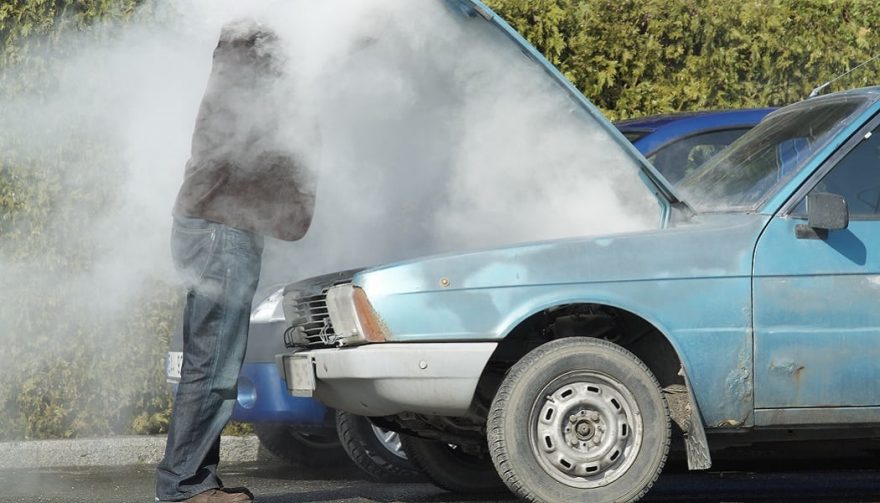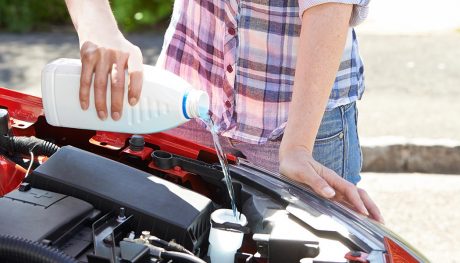
Persistent car problems may mean your car is on its way out
7 Signs You’re Probably Going to Need to Buy Another Car
Having car problems comes with the territory of owning a car. But some reoccurring car problems are signs that you might need to retire old faithful and buy a new car. Or at least another car.
Knowing when your car is about to give up the ghost can save you thousands in repairs. As a general rule your car won’t die without offering up some symptoms. The trick is determining if that noise or rattle from the engine compartment is a death groan or a relatively inexpensive fix. The key word here is “relative.”
You may want to dump a vehicle that needs $2,000 in repair but only has a $5,000 market value. On the other hand, it may have many miles left on it once fixed.
How do you tell the difference between old car quirky behavior and a car that’s about to become compactor meat? Here are seven sure fire signs it’s time to tell your car to hit the road.
Buying Oil by the Case, Not the Quart
If this is the case, you have a serious problem. Old engines are going to burn some oil because they aren’t as tight as new engines. The reason that oil “burns” is it has left the system it is supposed to be in and has leaked onto or into a hot engine component.
The worst case scenario is worn piston rings. Oil is left behind in the combustion chamber and burns. This is an unlikely event in newer cars with less than 100,000 miles, but a major repair for those owners who need a “ring job.” Other common causes of excessive oil burning include a worn out PCV valve and worn valve seals.
Oil is the engine’s blood. So if you are burning a quart a week, transfusions alone are not going to keep your engine alive. It’s one of the worst car problems, and it’s time to have a mechanic quote how much life support is going to cost.
Thirsty Engine Compartments
Your car relies on fluids to operate the cooling system, steering, brakes, transmission and even to keep your windshield clean. If you regularly check fluid levels and one of those is bone dry or consistently needs topping off, something is going to go very wrong.
Hydraulic fluids do not evaporate. A failed transmission, overheated engine or loss of braking lead the list of potential car-killing scenarios.
Your Ride Is a Smoker
What comes out your tailpipe can say a lot about what is going on in your powertrain. Blue-tinted smoke is caused by burning oil. This could mean your piston rings, valve seals or even the pistons themselves are shot. You can count on your oxygen sensor and catalytic converter to shoot craps as well.
White smoke means you are burning coolant or transmission fluid. White smoke means your head gasket is blown or your cylinder head is cracked or your transmission is about to go.
Then there is black smoke which means your car is on fire or your engine is running too rich. Given all the computer input and mechanical devices involved in determining fuel mix, you will need a pro to make a fix. It’s not a car repair you can make yourself.
Timing Is Everything
Timing belts, or timing chains, synchronize your engine so that the valves open and close when they are supposed to. If you have an “interference” engine in your ride and the timing belt fails, the valves and the pistons will collide and your engine will become instant toast.
Timing belts are made of rubber, so a good rule of thumb is to have them replaced every 60,000 to 100,000 miles (less in hot climates) depending on manufacture.
If you bought your car used and you don’t know when or if the timing belt was replaced, consider doing it now. They are not inexpensive to replace, but if they go your car goes with it.
Knock, Knock
A brand new engine makes a lot of noise. We just don’t notice it because of the insulation and engineering tricks that deflect and redirect the sound.
With older cars it’s a different story. The insulation has worn and you can hear what’s going on in the engine. If you hear knocking, you have a serious problem that may spell the end of the engine’s useful life.
An engine with a bunch of miles and not enough lubrication sets up a perfect environment for disaster. Poor lubrication on older parts can cause a rod, bearing or camshaft failure. This malfunction normally punches a hole through the side of the engine. And it also turns the car into grist for the junk yard.
Stage 4 Rust
Unless you live in the desert, you’ve probably experienced rust to one degree or another. Rocker panels, trunks, floorboards, fenders and hoods are common targets of the metal rot. Therefore, it’s good know tips to stop your car from rusting.
Rust is unsightly but when it attacks the frame, shock towers, suspension mounting points, brake and gas lines, it can become deadly. As far as car problems go, its very dangerous.
Rusted out critical points can cause a bad pot hole to break your car’s back. You don’t even want to find out what happens if you are involved in an auto accident.
Troublesome Transmission
If you shift your automatic transmission into drive and the transmission is slow to engage, it may be low on fluid. Or it could be your tranny’s way of telling you it is really, really tired.
Slipping gears, clunking sounds, jerky responses are all indicators that your transmission is in serious trouble. New or rebuilt transmissions are expensive. So you’ll have to make the decision if replacing yours makes sense.
Nobody wants to spend more than they have to on transportation, particularly on an older vehicle with car problems. So if your old ride is showing any of the symptoms above, think twice before trying to make a cheap fix.
Finally, as always, proper car maintenance can help extend the life of your car.





